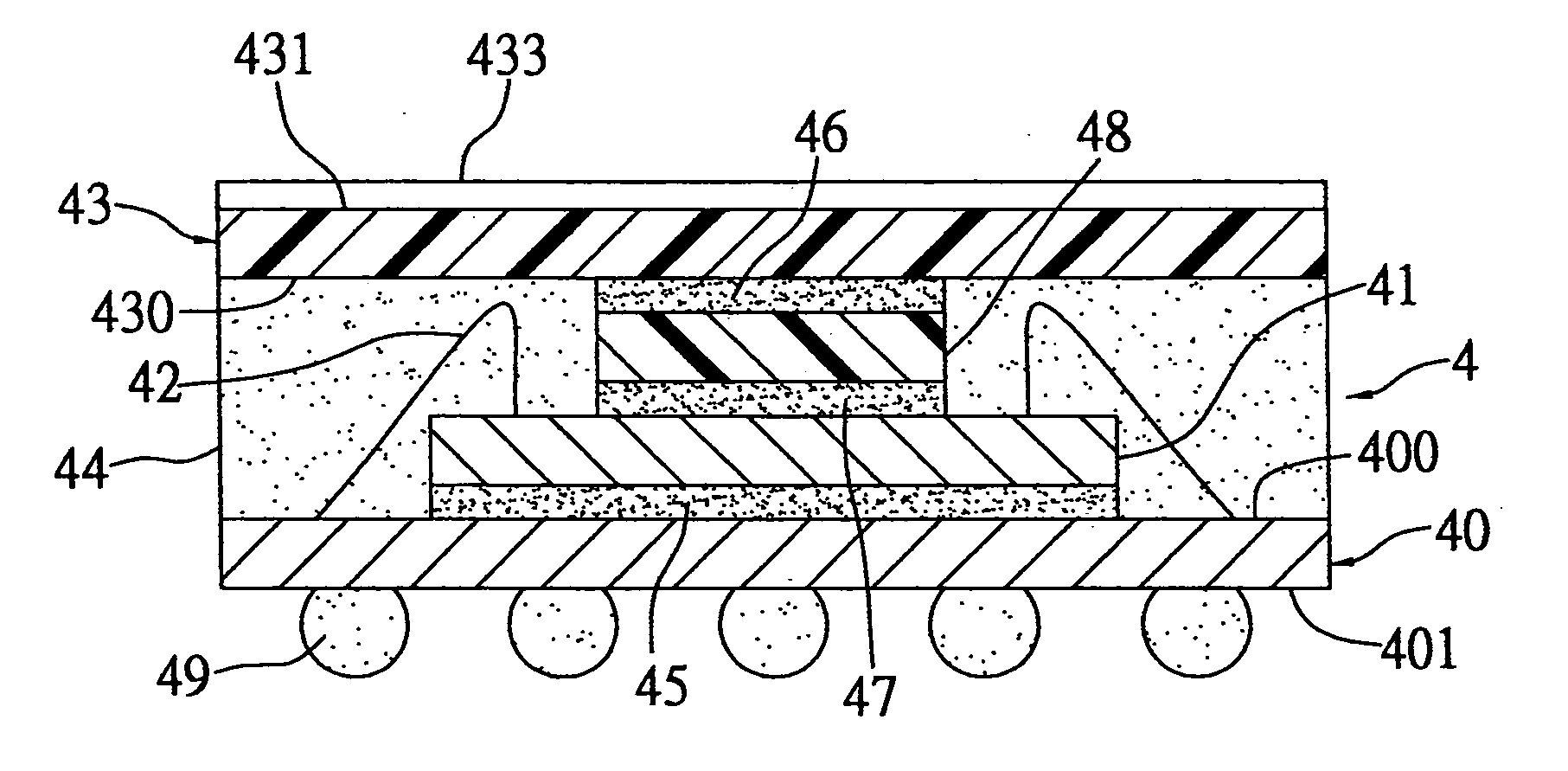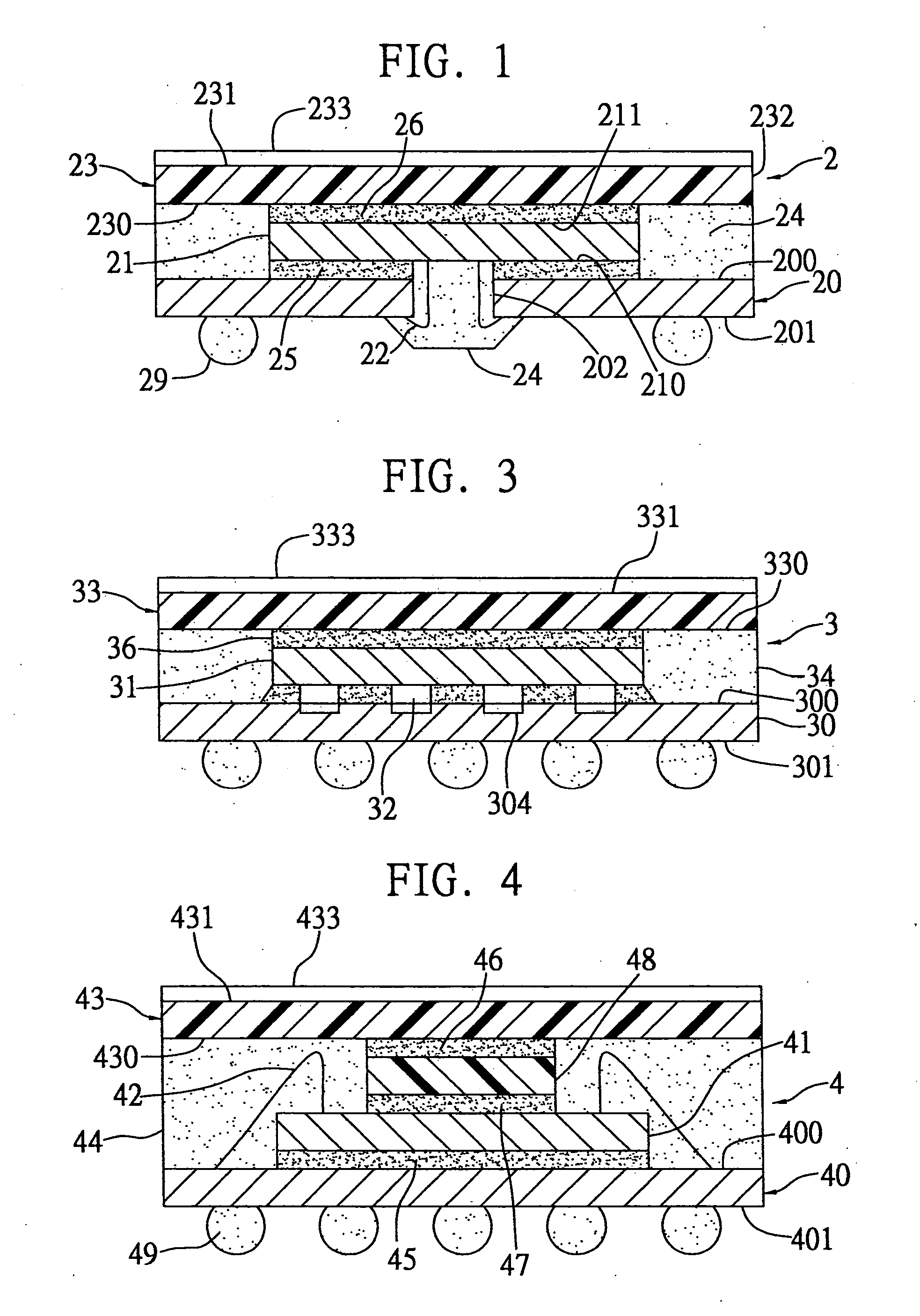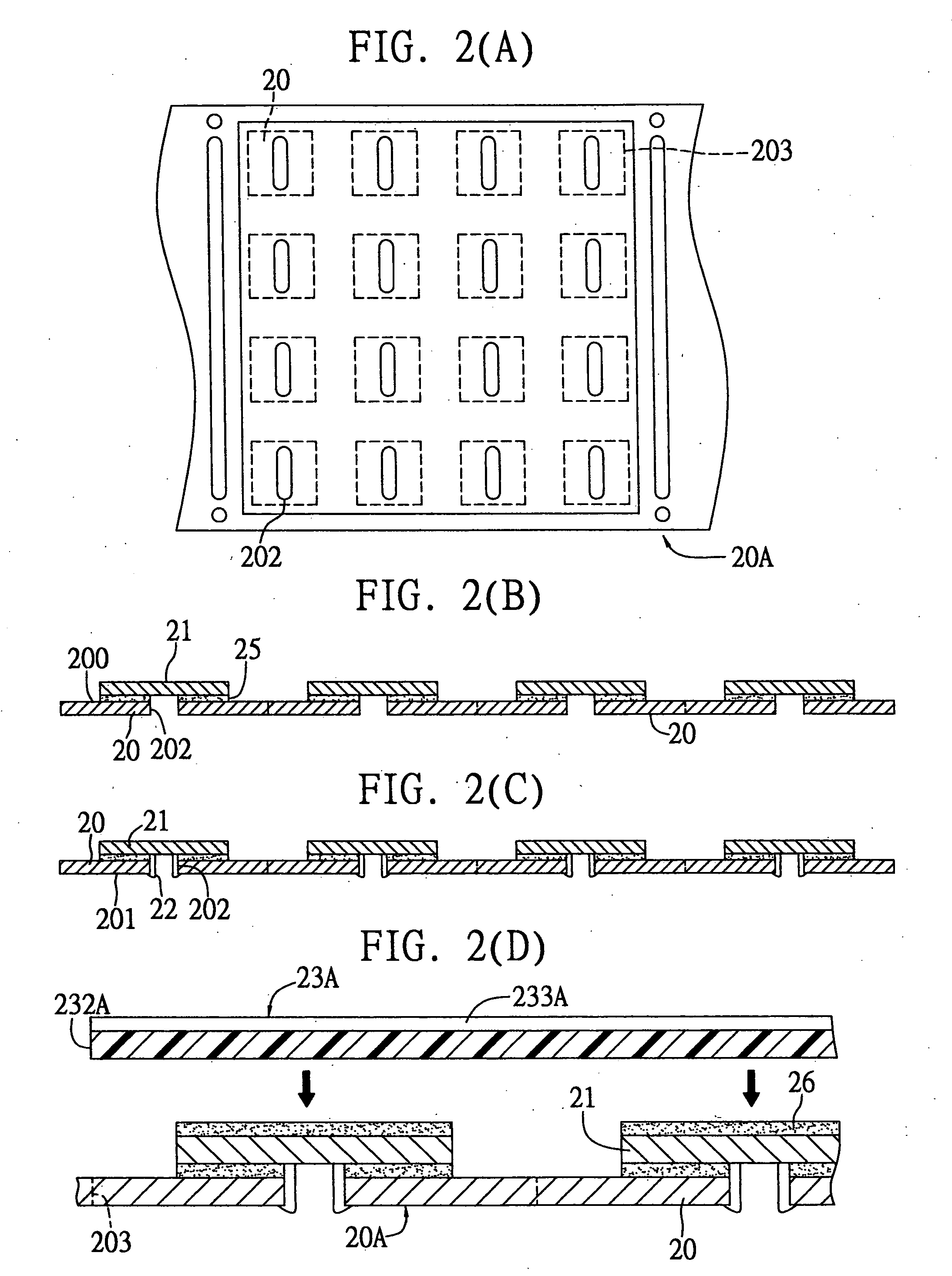Fabrication method of semiconductor package with heat sink
a technology of semiconductor packaging and heat sink, which is applied in the direction of semiconductor devices, semiconductor/solid-state device details, electrical apparatus, etc., can solve the problems of limiting the improvement of heat dissipation efficiency, affecting the heat dissipation efficiency, so as to prevent the damage of bonding wires, reduce thermal stress, and prevent the effect of bonding wire damag
- Summary
- Abstract
- Description
- Claims
- Application Information
AI Technical Summary
Benefits of technology
Problems solved by technology
Method used
Image
Examples
first preferred embodiment
[0027] As shown in FIG. 1, a semiconductor package 2 of the first embodiment of the invention includes a substrate 20; a chip 21 mounted on the substrate 20; a plurality of gold wires 22 for electrically connecting the substrate 20 to the chip 21; a heat sink 23 attached to the chip 21; and an encapsulant 24 for encapsulating the chip 21 and gold wires 22.
[0028] The substrate 20 has an upper surface 200, a lower surface 201 opposing the upper surface 200, and a hole 202 penetrating the substrate 20. On the lower surface 201 of the substrate 20 there are formed a plurality of conductive traces (not shown), which are connected to the chip 21 by means of the gold wires 22 passing through the hole 202 for electrically connecting the substrate 20 to the chip 21. The chip 21 has an active surface 210 and an opposing inactive surface 211. The active surface 210 is attached to the upper surface 200 of the substrate 20 through an adhesive 25 such as silver paste, while a plurality of bond p...
second preferred embodiment
[0039] Illustrated in FIG. 3 is the second embodiment of the semiconductor package of the invention. The semiconductor package 3 includes a flip chip substrate 30, wherein a plurality of bump pads 304 are formed at predetermined positioned on an upper surface 300 of the substrate 30, and a plurality of conductive traces (not shown) are formed on the upper surface 300 and an opposing lower surface 301 of the substrate 30 respectively. Then, a plurality of solder lumps 32 are bonded to the bump pads 304 for electrically connecting a chip 31 to the substrate 30 in a flip chip manner through the solder bumps 32. The chip 31 is attached to a first surface 330 of a heat sink 33 through an adhesive 36, allowing heat generated by the chip 31 to be directly transmitted to the heat sink 33. Further, on a second surface 331 opposing the first surface 330 of the heat sink 33 there is coated a gold layer 333, which with a molding resin has adhesion therebetween smaller than that between the firs...
third preferred embodiment
[0040] Illustrated in FIG. 4 is the third embodiment of the semiconductor package of the invention. The semiconductor package 4 adopts a conventional BGA substrate 40 having an upper surface 400 and a lower surface 401 respectively formed with a plurality of conductive traces (not shown), while the conductive traces on the surfaces 400 and 401 are electrically connected to each other. A chip 41 is attached to the upper surface 400 of the substrate 40 through an adhesive 45 such as silver paste, and then electrically connected to the substrate 40 through a plurality of gold wires 42. Subsequently, a buffer pad 48 is attached through an adhesive 47 to an approximately central position of a surface of the chip 41 having the gold wires 42 bonded thereto. The buffer pad 48 has a similar thermal expansion coefficient to the chip 41 and is dimensioned for not interfering the gold wires 42. Further, the buffer pad 48 is constructed to be higher than arcs of the gold wires 42, so as to preve...
PUM
 Login to View More
Login to View More Abstract
Description
Claims
Application Information
 Login to View More
Login to View More - R&D
- Intellectual Property
- Life Sciences
- Materials
- Tech Scout
- Unparalleled Data Quality
- Higher Quality Content
- 60% Fewer Hallucinations
Browse by: Latest US Patents, China's latest patents, Technical Efficacy Thesaurus, Application Domain, Technology Topic, Popular Technical Reports.
© 2025 PatSnap. All rights reserved.Legal|Privacy policy|Modern Slavery Act Transparency Statement|Sitemap|About US| Contact US: help@patsnap.com



